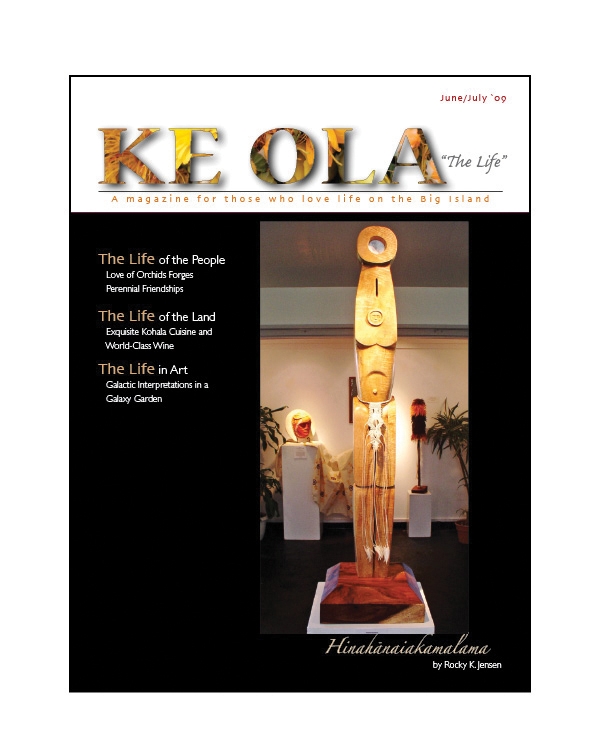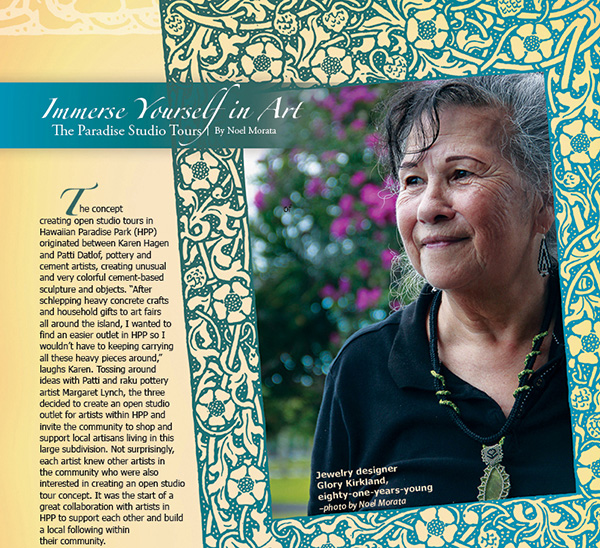
Motifs in Polynesian Design

By Ma‘ata Tukuafu
From the earliest European voyagers who traveled the vast Pacific Ocean in the 1500s to the vast numbers of visitors who spend their savings on touring the Pacific islands, the lure of Polynesia has always been present. Those who now make the islands their home seek to bring that special island magic into their décor.

What has passed many times as “Hawaiian” decor in upscale homes and businesses is really a combination of Asian art, Indonesian influence, “Tiki-Hawai‘i,” “Plantation-Hawai‘i” and everything in between. There are a couple of reasons for this; one is that true Polynesian furniture or home decoration has not been marketed or is available at custom or commissioned prices only. Another is that art, furniture and home decor from Indonesia and Asia is readily available at much lower prices. True Polynesian art is different, and a little less accessible.
There are recognizable traits that distinguish Polynesian motifs from other cultures. Polynesia encompasses many cultures; the triangle stretches from the Hawaiian Islands in the North to Aotearoa (New Zealand) in the South, and to Rapa Nui (Easter Islands) in the East. In each of those cultures, surviving artifacts we now deem as “primitive art” are really items that were made to do a job, or to have a function in everyday life.
Tapa (or kapa) cloth for instance, is a hallmark of Polynesian cultures. Made from the bark of the wauké tree, its uses were endless. Women pounded the bark until it was flat, soft and pliant and decorated the tapa for clothing, bedding, dowries, gifts and for ritual purposes. Designs were printed onto the tapa depending on what the tapa would be used for and on which Polynesian island it was made. Hawaiian kapa is distinctive as opposed to Samoan, Fijiian or Tongan.
Utility items like baskets and eating utensils were also decorated, and were pleasing to both the maker and the user. The enormous care and refinement of many of the surviving pre-1800 Polynesian items shows amazing craftsmanship and ingenuity, making them fine works of art.



A few years ago, items that had been carried back to Europe from Captain Cook’s three voyages to Polynesia between 1768 and 1780 were exhibited at the Honolulu Academy of Arts. Almost everything in the exhibition was in excellent condition, most likely from being in a colder climate or being stored in ideal conditions. Beautifully woven fishing nets from Hawai‘i still had shells attached to them as their weights, and mats from the different cultures showed a high level of craftsmanship in intricate designs with contrasting colors. These have provided information to modern-day artisans to recreate their beautiful designs for today’s homes.
Choosing to add a few pieces of Polynesian decor into the home not only supports local artisans and crafts-people, but also adds meaning and style, depending on the motifs chosen. Living here in Hawai‘i, we have access to many sources of Polynesian arts, crafts and artisans who create beautiful carvings, furniture, paintings and sculpture. With the use of the Internet, there is an even wider source of information and access to the Pacific Islanders and their art.
The difference between Polynesian art and motifs and Asian/Indonesian or other motifs can be seen in many wonderful Polynesian art and design books that now fill sections in libraries and bookstores for reference.
Most of the Polynesian designs that have come down to us into the present via carvings, mats, tapa cloth and tattooed body art originate from the Lapita peoples who populated first the western part of the Polynesian triangle, spread to the east, then to the north in the Hawaiian Islands and lastly into Aotearoa.
Through ancient Lapita pottery shards found in Tonga, Fiji and Samoa, distinct designs of geometric patterns, stylized humans and motifs of nature such as birds, trees and flowers are found. These designs and motifs have, over the years, been added to or re-designed and each Polynesian culture now has recognizable patterns that may be painted onto walls, canvases or home accessories. Floor rugs, textiles and wall coverings may be printed, or Polynesian motifs may be carved into wood cabinetry, doors or furniture.
It is through these beautiful and creative Polynesian art forms, passed from one generation to another, that we can create more beauty and meaning in our homes and our lives. ❖
Ma’ata Tukuafu is part Polynesian (Tongan). She is owner of Polynesian Design, a company specializing in Polynesian interiors. Visit her website.


